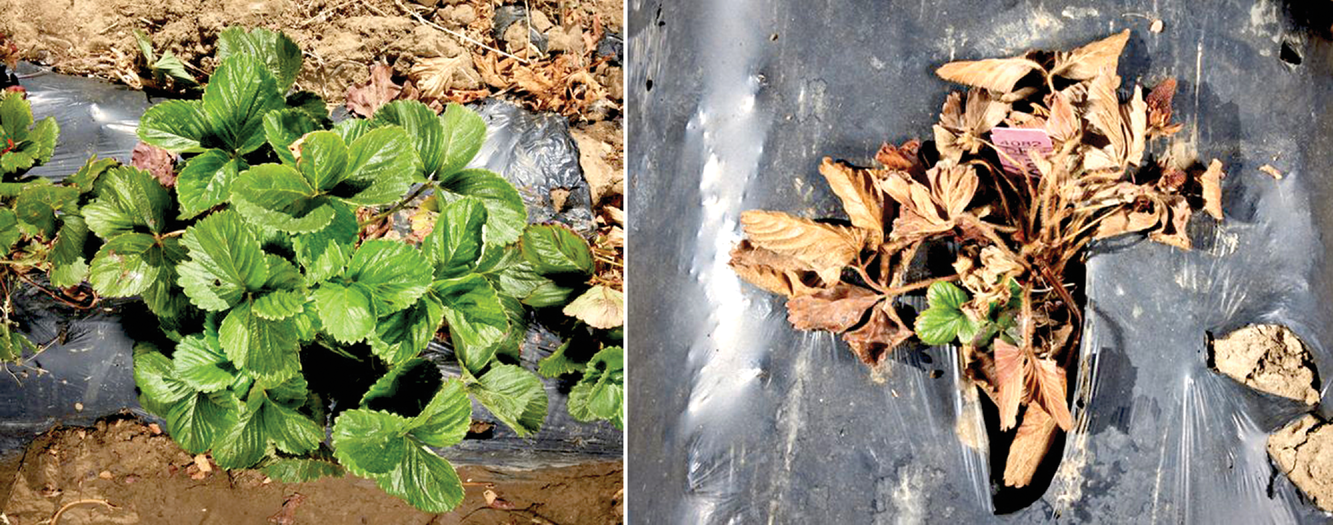Natural Genetic Resistance to Devastating Strawberry Disease

Phytophthora crown rot is a widespread and devastating disease of strawberry caused by the soil‐borne pathogen Phytophthora cactorum. The development of cultivars highly resistant to this pathogen has been challenging because the genetic mechanisms underlying resistance are complex.
Researchers sought to broaden knowledge about genetic variation for resistance to this disease among heirloom and modern cultivars and wild ancestor populations; identify donors of genes for enhancing resistance; and assess the effectiveness of genome‐informed methods for predicting resistance phenotypes and accelerating the development of resistant cultivars.
The researchers discovered that a high percentage of cultivars worldwide are moderately to highly susceptible, whereas only a small percentage are highly resistant. The strongest sources of resistance were heirloom cultivars developed in the 1950s, which are a potential source of genes for enhancing the resistance of modern cultivars. The team showed that a previously discovered locus (RPc2) plays an important role in determining resistance to this pathogen across populations in addition to increasing genomic prediction accuracy. RPc2 was found to be necessary but not sufficient for protecting the plant from damage.
Adapted from Jiménez, N.P., Feldmann, M.J., Famula, R.A., Pincot, D.D.A., Bjornson, M., Cole, G.S., & Knapp, S.J. (2022). Harnessing underutilized gene bank diversity and genomic prediction of cross usefulness to enhance resistance to Phytophthora cactorum in strawberry. The Plant Genome, 16, e20275. https://doi.org/10.1002/tpg2.20275
Text © . The authors. CC BY-NC-ND 4.0. Except where otherwise noted, images are subject to copyright. Any reuse without express permission from the copyright owner is prohibited.











